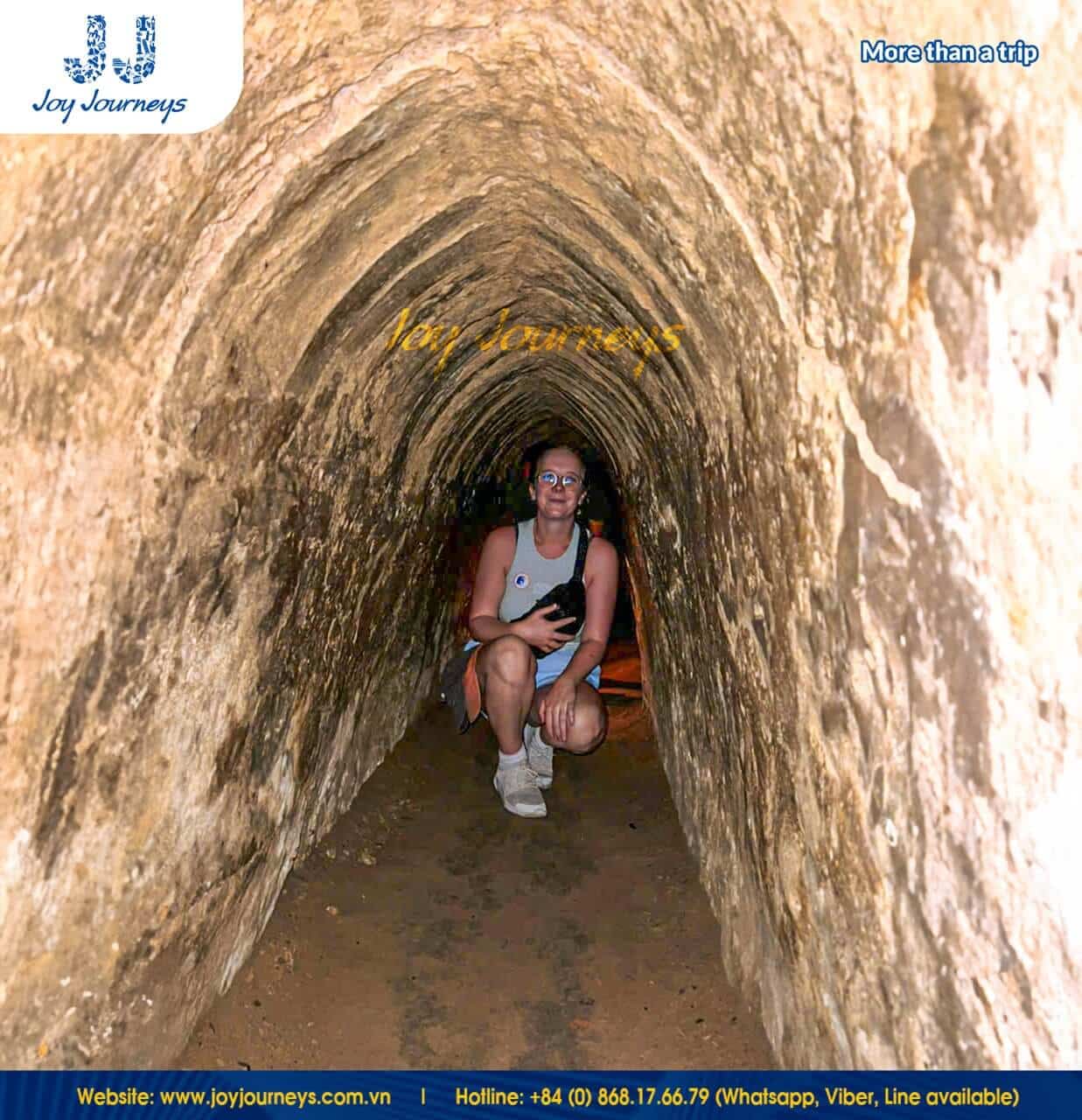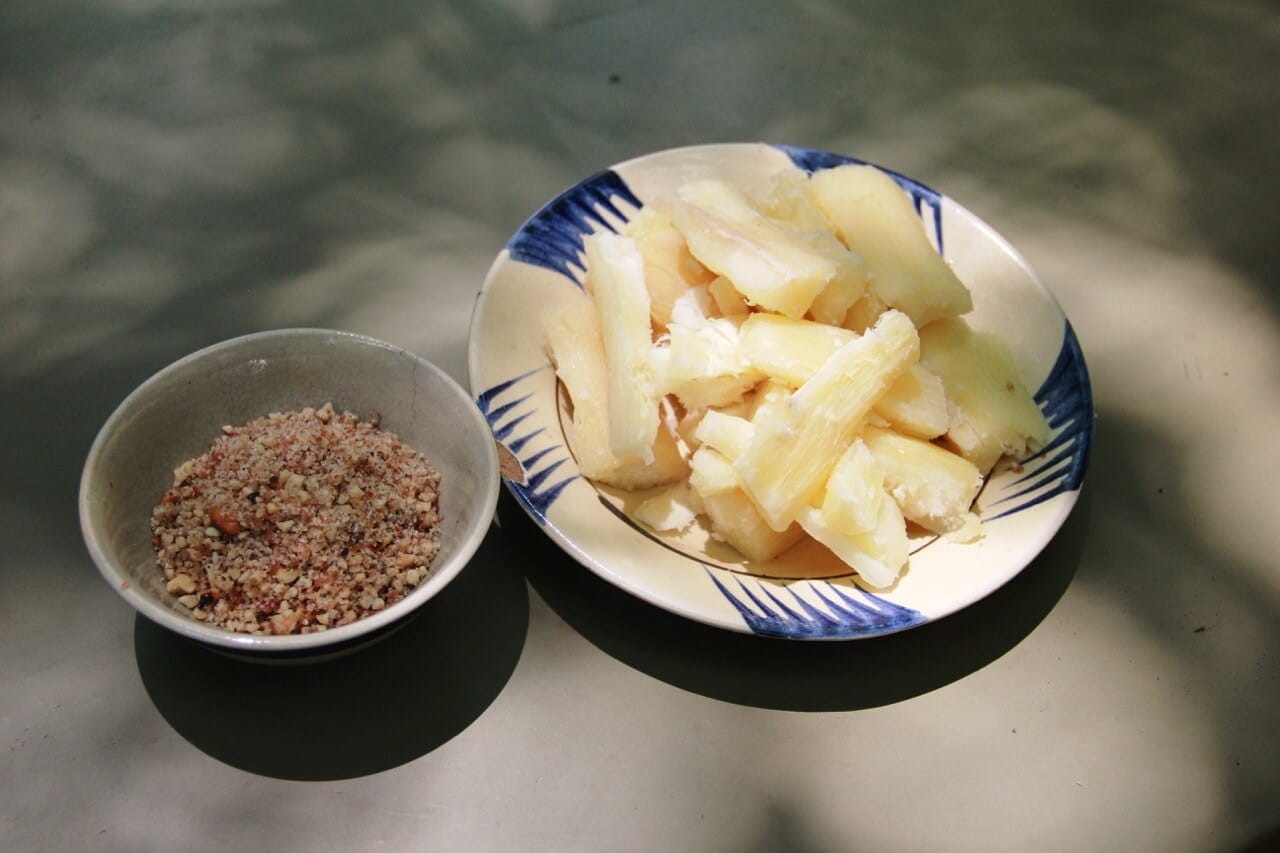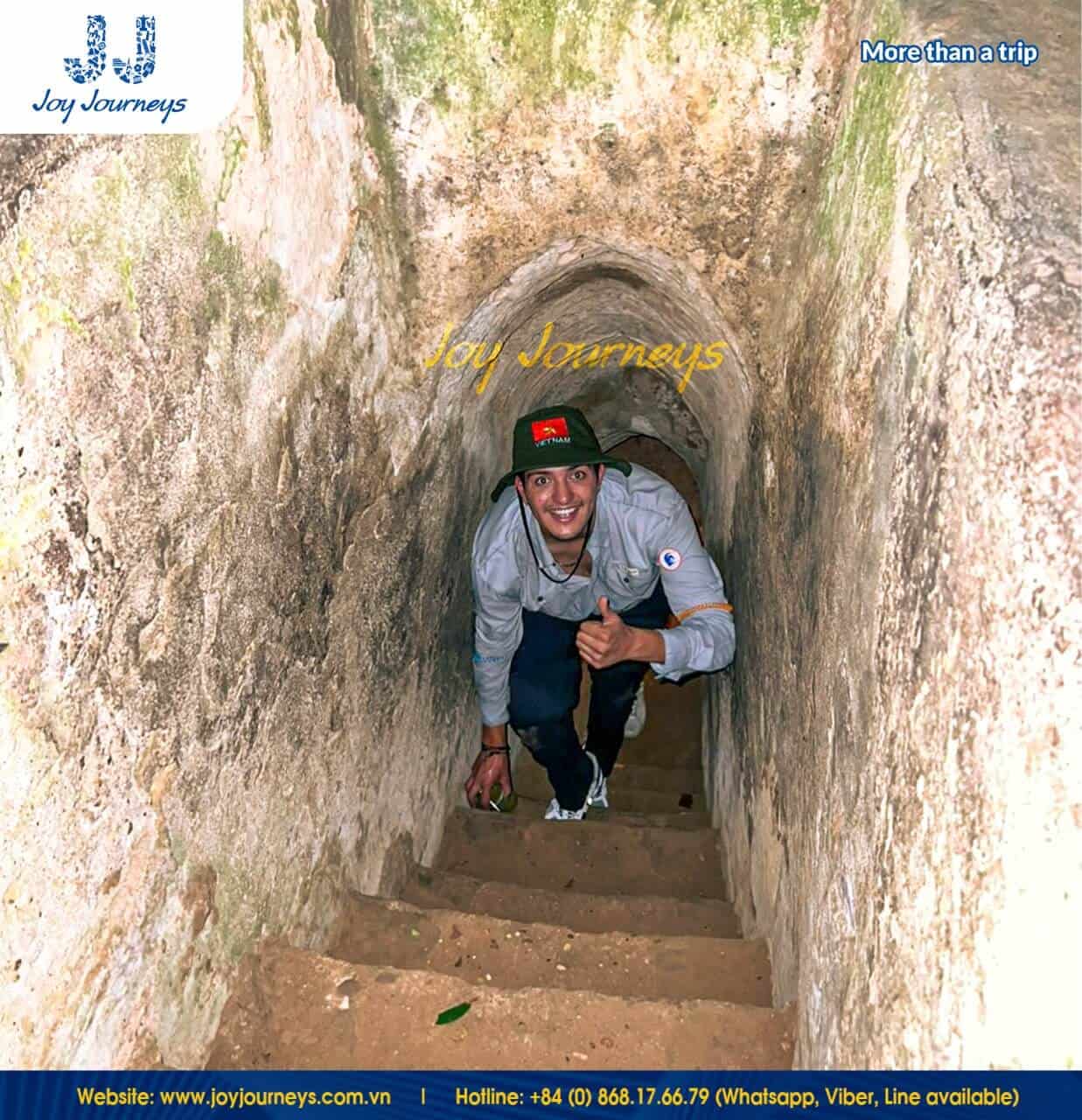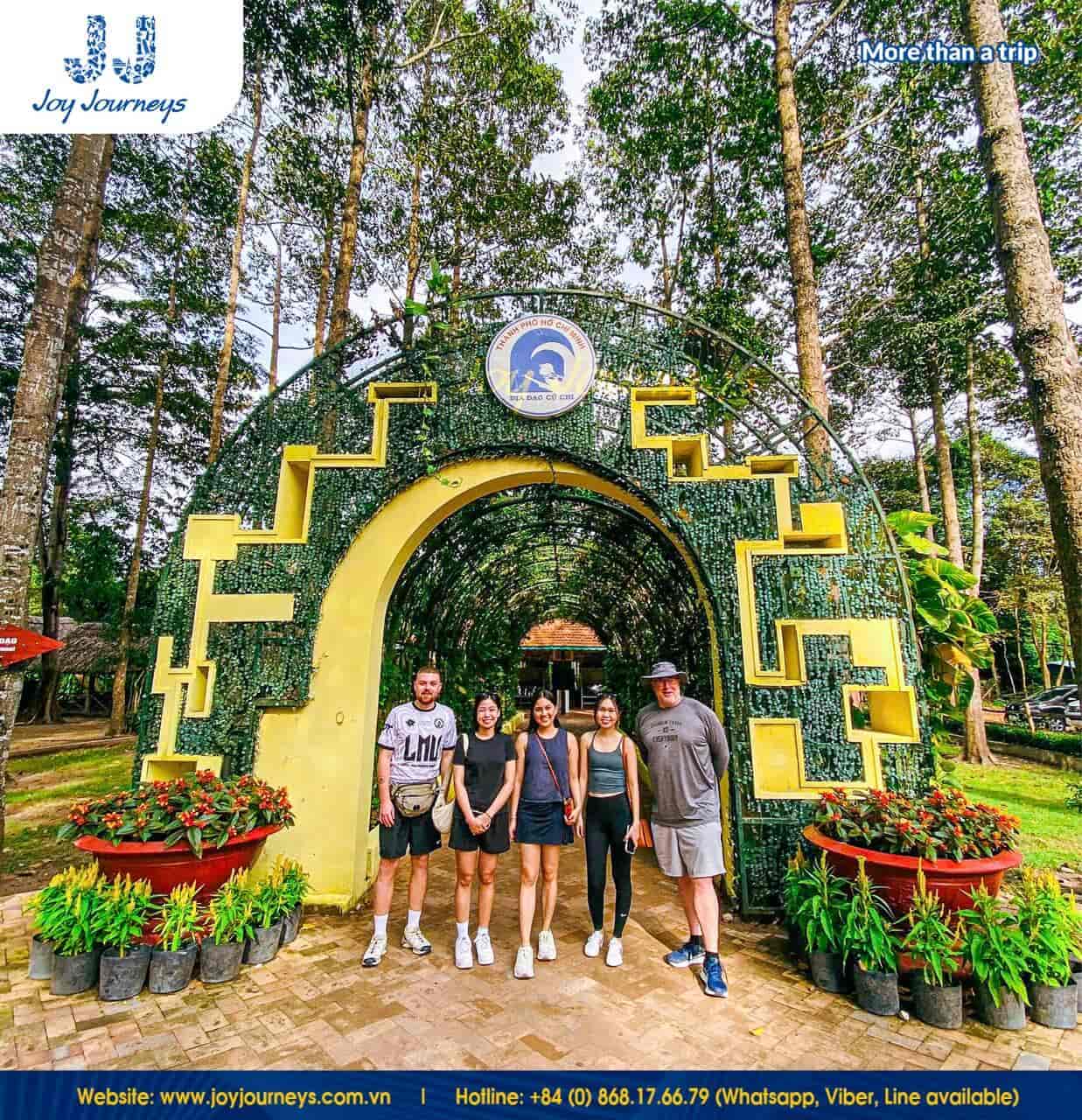The tunnel system at Cu Chi Tunnels is a testament to the ingenuity, perseverance, and indomitable will of the Vietnamese army and people during nearly 30 years of fighting. Beyond serving as a shelter, this intricate network evolved into a vital transportation and communication route for the soldiers.
Joy Journeys offers an in-depth exploration of the food and supplies within the Cu Chi Tunnels during wartime.
Contents
The Challenges of Underground Living
Life in the tunnels required unwavering perseverance and adaptability to endure humid conditions and the absence of natural light.
Limited Resources
Meals in the tunnels were simple yet energy-rich, designed for long-term storage to sustain the soldiers during periods of frequent enemy inspections. Operating primarily underground made gathering food and provisions even more challenging.
Environmental Factors
Growing crops underground was nearly impossible due to the lack of sunlight and insufficient water, further complicating the supply of fresh food.

Maintaining Secrecy
Food and provisions were partially transported from the surface, but soldiers had to exercise extreme caution during these operations to avoid detection, as the enemy constantly searched for the tunnels’ locations.
Food and Supplies in Cu Chi Tunnels
The management of food and supplies in Cu Chi Tunnels was crucial for survival, with cleverly designed kitchens and the use of local staples.
Food Sources
The Cu Chi Tunnels were equipped with cleverly designed kitchens that featured chimneys to diffuse smoke, along with storage areas for food, medicine, and weapons. These innovations ensured the Viet Cong had the best food and supplies in Cu Chi Tunnels to sustain life underground.
Staples like tapioca played a vital role in providing essential energy for the soldiers, while leaves and roots were frequently incorporated into meals due to their availability and nutritional value.

Water Sources
Water was crucial for survival, and digging an underground well was the first step in constructing the tunnels. These wells, typically 0.6 meters in diameter and 3 meters deep, served as the starting point for creating tunnels wide enough for people to navigate. Every 16 meters, additional wells were dug to support the expanding network.
Essential Supplies
To secure the best food and supplies in Cu Chi Tunnels, the Viet Cong demonstrated remarkable creativity. They sold bomb fragments in Saigon to purchase provisions and scavenged for resources under the cover of night. During heavy bombings, they often stayed underground for days, relying on stockpiled essentials.
The Truong Son Road, also known as the Ho Chi Minh Trail, played a vital role in transporting supplies to the tunnels, ensuring the survival and effectiveness of those who lived and fought there.
Ingenious Adaptations
To endure nearly 30 years of resistance against the US and French forces, the people in the Cu Chi Tunnels made numerous clever adaptations to survive.
Hidden Kitchens
A remarkable innovation was the Hoang Cam stove, named after the soldier who invented it. This stove was designed to divert smoke away from the tunnels to a distant location, dispersing it in such a way that it became nearly undetectable to the enemy.
The stove was connected to a system of ventilation grooves, which were camouflaged with tree branches and covered by a thin layer of soil kept moist to maintain humidity. As a result, the smoke emerged from the ground as a faint stream of steam that quickly dissipated, ensuring the tunnels remained concealed.
Waste Disposal
Waste management was another critical challenge the Vietnamese army and people addressed with ingenuity. Waste from the tunnels was silently transported to bomb craters or nearby rivers for processing. Even bomb fragments and detonators left by the enemy were either reused or sold to acquire essential resources.
For those interested in understanding these remarkable survival strategies, a Cu Chi Tunnels half day trip offers an incredible opportunity to witness firsthand the ingenious adaptations that sustained life underground during this period of resistance.
The Cu Chi Tunnels Today: A Glimpse into the Past
Preserving History
The Cu Chi Tunnels stand as a testament to the ingenuity and resilience of those who used them during times of war. Today, these tunnels are preserved for their profound spiritual and historical significance, attracting both domestic and international visitors.
By exploring the tunnels, visitors gain insight into the lives of the tunnelers—how they crawled through narrow spaces, cooked meals, found moments of entertainment, and endured incredible hardships. In 2023 alone, the tunnels welcomed over 1 million visitors, including more than 450,000 international tourists.
Visiting the Tunnels
The Cu Chi Tunnels are open to visitors daily from 7:00 AM to 5:00 PM in Phu Hiep commune, Cu Chi, Ho Chi Minh City. Travelers can choose between two main sites: the Ben Dinh Cu Chi Tunnels, which are more accessible and popular with tourists, or the Cu Chi Tunnels Ben Duoc, offering a quieter and more authentic experience.
When planning your visit, dressing comfortably is essential. Opt for thin, light, and absorbent clothing to stay cool during a day of exploration. Don’t forget to bring sunscreen and a hat to protect yourself from the sun while enjoying this journey into Vietnam’s remarkable past.

Experience the Cu Chi Tunnels with Joy Journeys
Why Choose a Guided Tour
The Cu Chi Tunnels are more than just a historical site; they’re a testament to human resilience and ingenuity. To truly appreciate their significance, a knowledgeable guide can illuminate the past, offering insights into the daily lives of the Viet Cong soldiers who once called these tunnels home.
Joy Journeys’ Cu Chi Tunnels Tours
Joy Journeys offers unique Cu Chi Tunnels tours that prioritize authentic experiences. Our small group tours (limit 10 pax) allow for personalized attention and a deeper connection to the history. Our expert guides will not only share historical facts but also weave captivating stories that bring the past to life.
Ready to embark on this unforgettable journey? Contact us on WhatsApp at +84 (0) 868.17.66.79 or visit https://joyjourneys.com.vn/ to book your Cu Chi Tunnels tour today.

Frequently Asked Questions
What to take to Cu Chi Tunnels?
A visit to the Cu Chi Tunnels from Ho Chi Minh City typically lasts half a day to a full day, so there’s no need to pack heavily. Focus on light, comfortable clothing made of breathable fabric, sunscreen, sneakers, a hat, and a sun protection shirt. Don’t forget essentials like a camera to capture the experience.
What are Cu Chi Tunnels famous for?
The Cu Chi Tunnels are renowned for their impressive 250 km length and their historical significance. They served as a strategic base for the Viet Cong during the Vietnam War and have become a symbol of the Vietnamese people’s resilience, strength, and ingenuity.
How long do you need at Cu Chi Tunnels?
A guided tour typically takes about 3-4 hours, providing valuable historical insights and context. If you visit independently, you might need additional time, as understanding the hidden stories and history can be challenging without guidance, especially if there’s a language barrier.
Is Cu Chi Tunnels worth visiting?
Absolutely! The Cu Chi Tunnels are a must-see for history enthusiasts and any traveler exploring southern Vietnam. This iconic site offers a unique glimpse into Vietnam’s past, showcasing its people’s courage and determination. Visiting the tunnels provides fascinating insights and fosters a deeper connection to the culture and history of this “S”-shaped country.
Conclusion
The Cu Chi Tunnels are a testament to human ingenuity and resilience. This intricate network of underground tunnels, once home to the Viet Cong, not only served as a strategic base but also stored essential food and supplies in Cu Chi Tunnels, showcasing the resourcefulness of those who lived and fought there. Consider joining a guided tour with Joy Journeys to appreciate this historical site.


Related Posts
Saigon’s “Flower Market Replica”: Where To Find Them
Ho Chi Minh City’s floral charm is not limited to its bustling wholesale markets. Imagine wandering through a place where vibrant petals, fragrant blooms, and the spirit of traditional Vietnamese markets come alive—without the overwhelming crowds. A flower market replica captures that magic, blending the beauty of fresh flowers with the charm of a curated, […]
Is it Safe to Travel to Vietnam Right Now? A Complete 2025 Guide
Vietnam has emerged as one of Southeast Asia’s most captivating destinations, drawing millions of visitors annually with its rich culture, stunning landscapes, and incredible cuisine. However, many travelers still ask: Is it safe to travel to Vietnam right now? This comprehensive guide provides you with everything you need to know about Vietnam travel safety in […]
Ho Chi Minh Cu Chi Tunnels Tour: The Ultimate Guide
The Cu Chi Tunnels stand as one of Vietnam’s most remarkable historical sites, offering visitors a profound glimpse into the ingenuity and resilience displayed during the Vietnam War. For travelers, a Ho Chi Minh Cu Chi tunnels tour represents an essential experience that combines education, adventure, and deep cultural understanding. This comprehensive guide will help […]